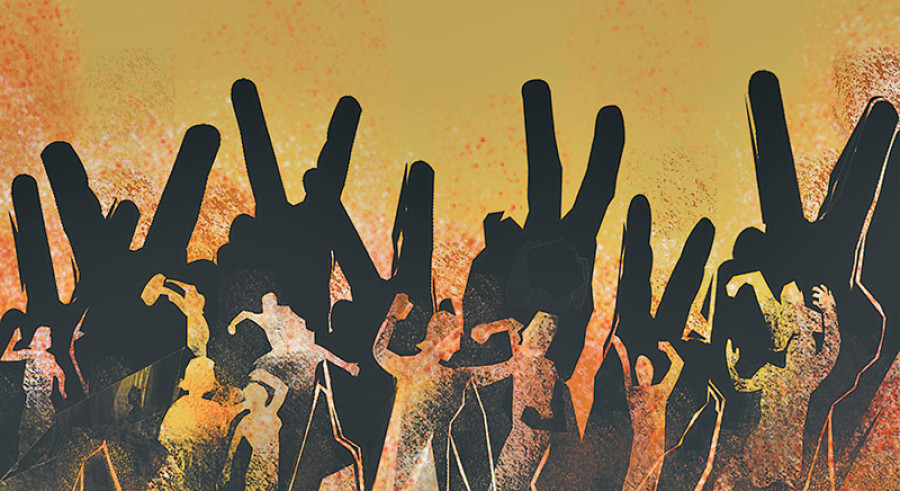Editorial
Nip it now
The frequency of communal violence points to a systematic attempt at inciting social discord.
Nepalgunj has been the epicentre of communal tensions in the past few days. Before Nepalgunj, there was Malangawa. And before that, Dharan was on the brink of a communal flareup as miscreants from one community gave hate speeches and peddled conspiracy theories against another. Such incidents in the southern plains are not isolated occurrences but the result of a carefully coordinated plan to communalise Nepali society. The social media warriors who senselessly share doctored videos are not helping. This is a dress rehearsal for a far greater communal discord if the Nepali state and society do not act in time to nip the bud of communalism.
Examples abound—not just in faraway places like Rwanda or Kosovo—but even next door India, where communalism has become a part of everyday life, with individuals and groups responsible for maintaining social order adding fuel to the communal fire rather than dousing it. What’s more, the mainstream media, especially television channels, continue to defend the state even as it fails to subdue the communal forces. In fact, communalism is a South Asian phenomenon, with one community fighting or subjugating the other in Pakistan, Bangladesh, Myanmar and Sri Lanka in recent decades. These examples suggest that once the seeds of communalism are sown, there is no stopping its outgrowth. And if we do not learn from the mistakes of our neighbours, we are doomed to fail as a nation.
The police administration has been somewhat swift in preventing violence during the recent communal flare-ups by imposing curfews. But curfewed cities do not mean peaceful cities. The state should proactively work with religious and community leaders to ensure communal harmony and respect for one another. Some religious leaders have shown a sense of responsibility by joining hands and asking the people to shed violence. But this is not enough. There should be a solid plan to mend the fault lines of Nepali society.
First and foremost, the state should make Nepali citizens aware that they can belong to a community and still avoid being a communalist. This is a society that has for centuries thrived in the oppression of various castes and communities as the key to power was with an elite class. The apparent unity of the country’s castes and communities has remained intact in the oppressed people’s indomitable will to change society through dialogue and perseverance, and a general aversion to violence. In that sense, their emancipation continues to be deferred, despite sporadic iterations of victory through affirmative action and the natural course of change.
The violence that has erupted in the Nepali plains in the past few weeks, though, did not arise from a quest for emancipation. Rather, it is an artificial conflict ignited by a nexus of politicians and religious zealots who aim to benefit from the rift among the people. Although small incidences of communal tension have been witnessed in the southern plains in the past years and decades, the frequency with which they are occurring points to a systematic attempt at inciting violence and social discord. We cannot let the apologists of hatred and communalism win. Each one of us—state functionaries, political parties, professional associations, religious groups and individual citizens—must contribute in our own way in defeating the communalists and restoring peace and harmony in Nepali society.




 11.12°C Kathmandu
11.12°C Kathmandu












%20(1).jpg&w=300&height=200)

